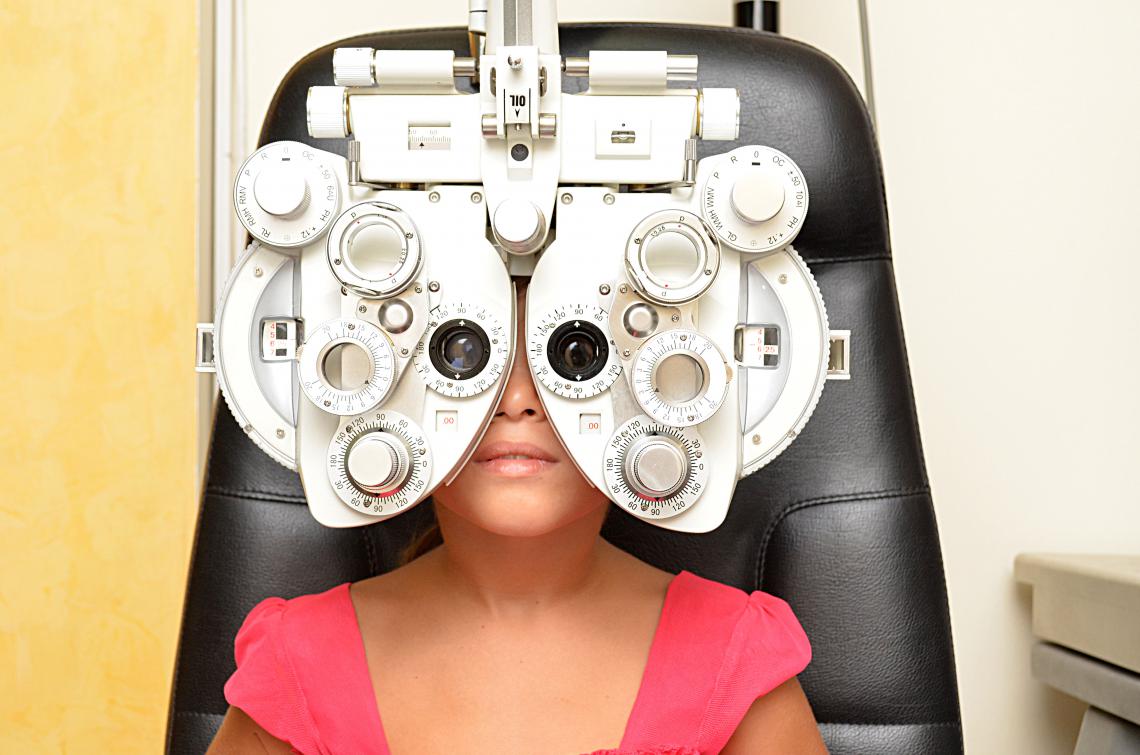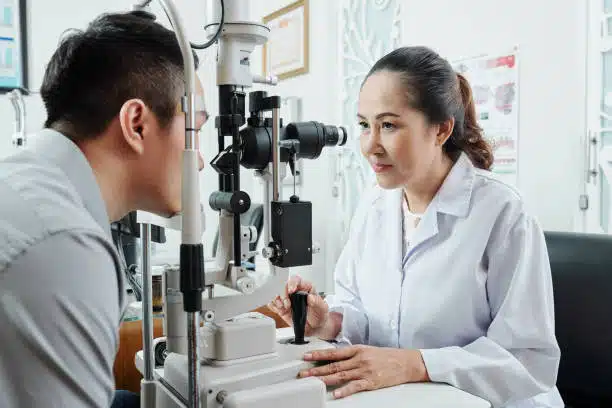Understanding the Duty of Your Eye Doctor in Preserving Vision
Discovering the current Technological Innovations in Optometry and What They Mean for Eye Doctors
In the ever-evolving area of optometry, current technological advancements are improving how specialists come close to eye care. From the accuracy of Optical Comprehensibility Tomography to the nuanced understandings supplied by AI-driven analysis devices, these innovations are establishing brand-new criteria in person evaluation and treatment. Teleoptometry is poised to redefine accessibility, making certain that experience transcends geographical constraints. As these advancements permeate the practice, optometrists are encountered with the challenge of accepting these devices to improve patient outcomes. The question continues to be: exactly how will these technological shifts redefine the duties and duties within the career?
Innovations in Diagnostic Tools
Advancing the area of optometry, innovations in analysis devices have actually changed the method eye care professionals analyze and diagnose aesthetic problems and ocular conditions. The previous years has actually observed significant technical improvements, allowing even more precise and extensive analyses.
Another key technology is the introduction of innovative corneal topography systems, which map the surface area curvature of the cornea with accuracy. These tools are particularly useful for fitting call lenses and identifying corneal problems. Electronic retinal imaging has actually transformed standard ophthalmoscopy, supplying in-depth, scenic views of the retina that assist in detailed aesthetic evaluations.
The growth of wavefront aberrometry has actually additionally been vital, enabling the evaluation of refractive mistakes with unparalleled precision (Optometrist Chino). This innovation assists in customizing restorative lenses and enhancing medical outcomes for refractive surgical treatments. Jointly, these diagnostic innovations encourage eye doctors to deliver remarkable patient treatment, guaranteeing very early intervention and tailored therapy approaches, ultimately enhancing visual wellness end results
AI in Person Administration
Building on the foundation of innovative diagnostic devices, the consolidation of synthetic knowledge (AI) in client monitoring stands for a transformative jump for optometry. AI systems are significantly utilized to improve performance, precision, and personalization in patient care. By evaluating vast quantities of data, AI can identify patterns and anticipate prospective ocular conditions, enabling eye doctors to customize interventions extra successfully. This capacity is important in managing persistent eye diseases such as glaucoma and diabetic person retinopathy, where early discovery and constant tracking are vital.
Moreover, AI-driven systems assist in streamlined client interactions and administrative procedures. Automated organizing, virtual examinations, and individualized follow-up plans not only enhance person satisfaction but likewise enhance time monitoring for experts. These systems can triage clients based upon the seriousness of their problems, guaranteeing that those in important demand receive prompt attention.
In addition, AI boosts decision-making by supplying optometrists with evidence-based suggestions and therapy paths. By integrating information from electronic health and wellness documents, AI tools supply insights that notify professional choices, lowering the risk of errors and improving patient results. As AI continues to progress, its duty in person administration will likely broaden, reshaping the landscape of optometric care.
Breakthroughs in Retinal Imaging
In the realm of optometry, retinal imaging has actually observed amazing technological innovations that are improving analysis capacities and patient care. Developments such as Optical Comprehensibility Tomography (OCT) and fundus photography have changed exactly how eye doctors analyze the retina and picture.
Improved imaging methods like OCT angiography are additional refining analysis precision. This non-invasive strategy maps blood circulation in the retina, supplying essential understandings right into vascular wellness without the need for dye injections. In addition, flexible optics modern technology is being incorporated right into retinal imaging systems to deal with ocular aberrations, delivering extraordinary picture clarity. Such developments facilitate the identification of minute retinal adjustments that might indicate disease progression.
Additionally, improvements in artificial intelligence are enhancing retinal imaging by making it possible for automated evaluation of big datasets. These systems help eye doctors in determining Opticore Optometry patterns a sign of pathology, consequently boosting diagnostic accuracy and efficiency. Jointly, these innovations are changing retinal imaging into a foundation of modern eye treatment, boosting outcomes and increasing healing possibilities.
Teleoptometry's Expanding Duty
Teleoptometry is significantly ending up being an important part of eye care, driven by developments in electronic communication and analysis devices. As optometry embraces electronic change, teleoptometry assists in remote examinations, enabling eye doctors to expand their solutions beyond standard limits. This is specifically useful in country and underserved locations where accessibility to specialized eye treatment is commonly limited. By leveraging high-resolution video clip conferencing and progressed retinal imaging, eye doctors can perform thorough eye examinations from afar, making sure prompt diagnosis and therapy.
The combination of artificial knowledge (AI) further improves teleoptometry, enabling the evaluation of visual information and aiding in the discovery of eye problems such as glaucoma and diabetic person retinopathy. AI-powered formulas can rapidly translate intricate imaging information, giving optometrists with valuable insights that boost clinical decision-making.
Furthermore, teleoptometry sustains continuity of treatment via smooth assimilation with digital wellness documents (EHRs), enabling eye doctors to maintain extensive individual histories. This ensures that patients receive individualized and regular treatment even when talking to different experts.
In spite of these benefits, difficulties remain, consisting of guaranteeing information security and managing patient assumptions. Teleoptometry stands for a considerable stride towards even more available, effective, and patient-centered eye care. As technology develops, its role is poised to broaden further.

Future Patterns in Eye Treatment
A myriad of cutting-edge fads is readied to reshape the future of eye care, driven by technological innovations and the progressing demands of clients. One considerable trend is the assimilation of expert system (AI) in diagnostics, which assures to boost the accuracy and effectiveness of eye exams. AI algorithms can evaluate substantial amounts of data from retinal pictures, potentially finding problems like diabetic retinopathy and glaucoma earlier than standard techniques.
Furthermore, tailored medicine is obtaining traction in optometry, with genetic screening notifying tailored therapy strategies. This method intends to maximize client results by customizing treatments to private genetic profiles. Wearable innovation, such as wise call lenses, is additionally imminent, supplying real-time surveillance of intraocular stress or glucose degrees, hence giving constant understandings right into systemic and ocular wellness.
The adoption of augmented reality (AR) and online fact (VR) in training and person education and learning is one more emerging pattern. These innovations offer immersive experiences that can boost understanding and abilities both for optometrists and clients. As these trends develop, optometrists need to stay abreast of technological advancements to provide innovative treatment, ensuring enhanced patient results and satisfaction in the vibrant landscape of eye treatment.
Conclusion

Collectively, these analysis advancements encourage eye doctors to supply remarkable patient treatment, making sure very early treatment and customized page treatment strategies, eventually improving aesthetic health and wellness end results.

As these innovations continue to advance, optometrists should adapt and include them right into practice, inevitably optimizing process efficiency and boosting the requirement of eye care delivered to patients.